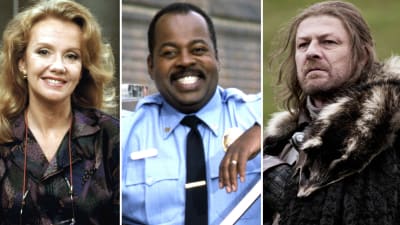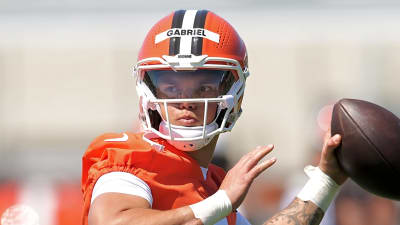
As one of the only North American ski resorts that remains open into May and beyond, Mammoth Mountain, California, is a great place to say goodbye to the season.
For former Olympian and freeskier Gus Kenworthy, though, a recent trip to the mountain was about training for the future and beginning anew. In 2026, he hopes to compete in halfpipe at Milano Cortina, Italy.
Most thought that Kenworthy had already finished. After the 2022 Beijing Winter Olympics, he retired. Wracked by several head injuries, he’d suffered dizziness, nausea, and vertigo. In the lead-up to the Beijing Games, he couldn’t ski more than four or five practice runs without feeling symptomatic.
Simultaneously, Kenworthy had grown tired of the professional athlete lifestyle. Whenever he was on the road to compete or train, he felt himself more drawn toward his home, friends, and family. “I was kind of longing to spread my wings and do something else,” he said. So, Kenworthy closed that chapter of his life. He was 30.
With skiing behind him, Kenworthy participated in real estate projects and invested in a few companies, like Nomadica, a sustainability-focused wine label. “There wasn’t one specific thing that I completely threw myself into,” he said. “It was just more so trying to keep myself busy and active.”
Want to keep up with the best stories and photos in skiing? Subscribe to the new Powder To The People newsletter for weekly updates.

Before his retirement, he had also dabbled in acting and earned a role in the TV show American Horror Story: 1984. That pursuit became his focus post-skiing, but despite landing a handful of additional roles, Kenworthy admitted, “It's a tough industry to crack into.”
All the while, thoughts of skiing lingered. Kenworthy, like any other former professional skier, spent much of his life living and breathing the sport, and without it, he felt depressed at times.
“I don't think I realized how big of an impact it was going to be for me to no longer ski,” he said.
Kenworthy eventually interrogated that feeling more closely. Did he want to compete again just because he felt like he should? Was he feeling lost because of his departure from skiing?
Then, one night, Kenworthy stepped off the dance floor at a party he was attending, ducked into the bathroom, and checked his phone. A notification reminded him that a major freeskiing competition had just ended. He watched a replay of the event and was suddenly overcome with a deep sense of guilt.
“Why am I not there?’” Kenworthy thought. “I should be.”
That sentiment stuck. The symptoms of his head injuries had, with time, subsided. He felt healthy and strong, but the clock was ticking. Kenworthy turns 34 this October. A comeback at that age seemed feasible to him. However, waiting another four years without competing in skiing and attempting to qualify for the Olympics at 38 was less realistic.
“If ever there was a time, it's now,” he thought. “I can't wait any longer. I've already waited till the 11th hour.”
Born in Great Britain but raised in Telluride, Colorado, Kenworthy is, in the public eye, far more visible than your average freeskier. He first shot to prominence after participating in an all-American sweep of the 2014 Sochi Winter Olympics slopestyle podium alongside Nick Goepper and Joss Christensen.

One year later, Kenworthy came out, becoming history’s first openly gay action sports athlete. “That kind of catapulted me into a different level of being known,” he said. At the 2018 Pyeongchang Winter Games, he shared a televised kiss with his then-boyfriend in a moment that would draw significant media attention and be heralded for promoting LGBT visibility. Today, over one million fans follow him on Instagram, where his bio reads, “Olympic silver medalist. Britney Spears used to follow me.”
Not so long ago, returning to halfpipe skiing in your 30s after a multi-year hiatus may have appeared unconventional at best and ill-advised at worst. The discipline is highly technical, dangerous, and, at face value, catered towards younger, more durable athletes.
Yet, this past season on the men’s World Cup circuit, the two most dominant halfpipe skiers—Nick Goepper and Alex Ferreira—were also among the oldest, both having surpassed their 30th birthday. David Wise, the sixth-highest-ranked World Cup halfpipe skier last season, is 34. As a member of this crowd, Kenworthy isn’t an outlier.
He also had some comeback inspiration from another snowsports veteran in a different discipline: Lindsey Vonn, the decorated alpine racer who exited retirement at 40 and began successfully competing again. Kenworthy said he thought that Vonn’s performance was “badass,” adding, “I think I have that in me, too.”
In early May, Kenworthy headed to Mammoth Mountain along with Matt Margetts. There, he attended a halfpipe-focused training camp that consisted of elite freeskiers and snowboarders. Margetts, a former Olympic halfpipe skier who has worked with the Canadian National Team and the U.S. Ski Team, served as Kenworthy’s coach. He expected a gentle transition back for Kenworthy but was quickly treated to something different.
“Run one—he dropped into the pipe. He did a 15-foot straight air into another 15-foot straight air into a 15-foot cork five blunt,” said Margetts. “I was so fired up.”
By the end of the training stint, Kenworthy, barely out of retirement, was throwing double cork 1260s and 1440s, demonstrating his persistent knack for skiing. He hadn’t ridden in a halfpipe since the Beijing Games and, throughout his multi-year break, had only skied for about two weeks. “What he pulled off in three and a half days was insane,” said Margetts.
But it wasn’t entirely new territory for Kenworthy to reenter the sport without much prior practice. A call from his longtime friend and fellow professional skier Bobby Brown had previously pulled Kenworthy back into competing during his retirement, if only briefly and in a more casual format.
In 2024, Brown was hosting another edition of Red Bull Cascade, his freeskiing event that blends slopestyle with all-mountain skiing. He asked Kenworthy about participating in the competition despite being retired. Kenworthy said yes and, true to form, put on a show.
“I was like, ‘God damn it, Gus,’” Brown said, describing the tricks Kenworthy threw at Cascade. “If I could encapsulate who he is, that would be it—like, come in one day and just start going absolutely insane.”
Still, Kenworthy is, in another way, starting over as a freeskier. While he’s retained a relationship with Monster Energy, he has no additional ski-specific sponsors nor financial backing from a national team. As of our conversation a few weeks ago, his attempt at returning to the Olympics was entirely self-funded. Halfpipe training camps, travel, and coaching, which can all add up to thousands of dollars, are his responsibility alone.
At Mammoth, he took a scrappy approach, relying on the same old ski gear he used back when he was an established professional. Kenworthy did note, however, that he’s already in discussions with what could become future sponsors.
Kenworthy has decided to compete for Great Britain this winter, just as he did in 2022, honoring the country where he was born. To earn a ticket to the Olympics with Great Britain, he must finish in the upper 40% of competitors at two of the four upcoming World Cup halfpipe competitions he plans to attend, among other criteria. His first shot at the leaderboards will come during an event in China in December 2025.
“It's going to be super difficult to try and qualify at this point,” Kenworthy said. “But it is possible. So, why not?”
More must-reads:
- Novak Djokovic sparks major concern ahead of U.S. Open
- Padres already demoting one of their trade-deadline acquisitions
- The 'NBA minutes leaders by season' quiz
Breaking News
Trending News
Customize Your Newsletter
 +
+
Get the latest news and rumors, customized to your favorite sports and teams. Emailed daily. Always free!








